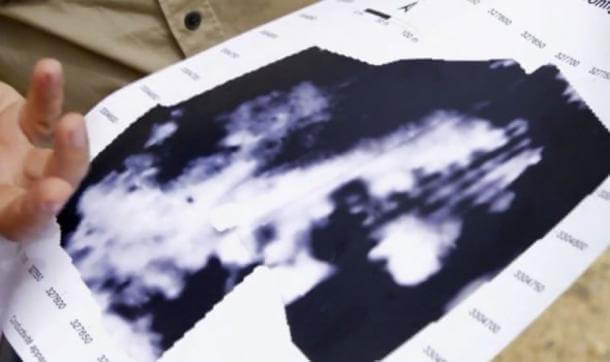 1
1

Arkaim and the texts of Rgveda about his builders
 25. 04. 2024
25. 04. 2024



 12. 10. 2020
12. 10. 2020

An archaeologist with 30 years of experience working in Egypt has made a stunning statement. He believes he has found evidence that there are traces of an undiscovered pyramid in Saqqara under the desert sand. If he proves he was right, it could mean that there are still many pyramids waiting to be discovered in Egypt.
Dr. Vasko Dobrev "has spent the last three decades probing an area about 30 km from the famous pyramids of Giza," writes the Daily Express. During that time, he made a number of fascinating discoveries. The expert recently was a guide to a documentary by the British television station Channel 5. The show, entitled "Opening Egypt's Great Tomb", also featured well-known television personality Tony Robinson.
Robinson and Dobrev traveled to Saqqara, a royal burial ground located near the ancient Egyptian capital of Memphis. This area played a key role in the development of stepped pyramids during the Old Kingdom. The first building of this type was built by the architect Imhotep for the king of the 3rd dynasty Djoser, but these monumets were not brought to perfection until the reign of Pharaoh Snefru (he ruled between 2613 and 2589 BC). This pharaoh, who founded the 4th dynasty, had three pyramids built, the most famous of which is the so-called red pyramid.
Dobrev claims to have found the remains of a pyramid. He believes that "the new pyramid may lie buried under the sand in the area of southern Saqqara," said Curiosmos.com. Located in the Tabbet al-Guesh area northwest of the funeral complex of Pharaoh Pepi I. Dobrev told Robinson that there are still many wonderful things to discover in Saqqara. According to the Daily Express, the Egyptologist told the astonished documentary filmmaker that "Saqqara is proud of the oldest pyramid and many others."
Dobrov believes that all members of the royal dynasty were buried here because it is located near Memphis. Not all royal burials have been discovered so far, so he is convinced that it is still possible to discover many pyramids. An Egyptologist took Robinson to a plateau, which he believes contains traces of a pyramid. It has been undiscovered here for millennia. Dobrov is sure that under the sand lies the base of the pyramid built for Pharaoh Userkare (23rd century BC).
The Egyptologist emphasized that this pharaoh of the sixth dynasty did not live long enough for his pyramid to be completed. Curiosmos.com quoted Dobrov as saying that the ruler "could only have time to build the foundations of the pyramid." An Egyptologist has revealed that there is an unidentified structure in this area under the sand, which is most likely the work of human hands because it has right angles. This was found by scanning this area with the most advanced geophysical methods. According to the pictures, the building measures 80 by 80 m. Curiosmos.com said it was "exactly the right size for Userkare's reign."

A picture of the desert, under which there is probably a pyramid buried under the sand. Source Channel 5.
Dobrev seems to have found a square structure that could be the base of the pyramid. He also provided the British documentary filmmaker with a picture of the films. There is something unusual about them under the desert sand, but it is still a question of whether it is conclusive evidence. There are no indications that archaeological excavations should begin at the site where the lost pyramid may be buried. It seems likely that Dobrov will continue to work in this area, as it has done for the last three decades. If he proves he was right, there may be more pyramids in Egypt than the 120 known so far.